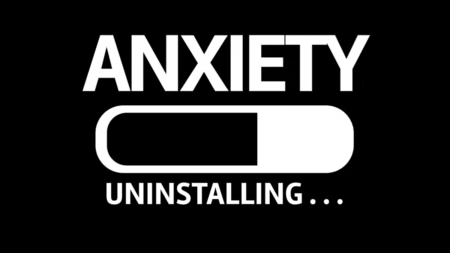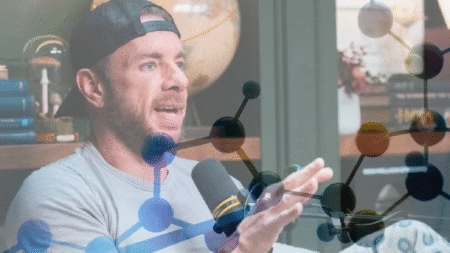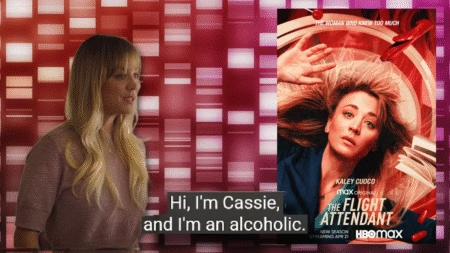
In the Hulu series Dopesick, we watch well-intentioned doctors prescribe OxyContin, believing they’re helping. They trust the company. They trust the data. They trust that more medication equals better outcomes. And then—through the lens of hindsight—we watch that trust morph into complicity in an epidemic.
I’m not comparing addiction psychiatrists to the villains of the opioid crisis. But I am asking a question that makes many people squirm:
What happens when treatment centers prescribe so many medications that a person loses access to the very thing that could save them—their own innate capacity to heal?
A Case Study: Six Medications, Zero Baseline
A young man I know—we’ll call him Alex—recently completed treatment at a respected residential facility, here in San Francisco. Diagnosed with depression at age ten, he’s lived through profound trauma and turned to substances to cope. He’s also celiac, which complicates everything in ways his treatment team didn’t seem to consider.
When he left treatment, he was sober—and on six medications prescribed by the center’s psychiatrist, an MD with decades of experience:
- Naltrexone (for alcohol use disorder)
- Abilify (atypical antipsychotic)
- Wellbutrin (antidepressant)
- Gabapentin (anticonvulsant, off-label for anxiety)
- Trazodone (sedating antidepressant for sleep)
- Vyvanse (stimulant for ADHD)
Alex attends group therapy and twelve-step meetings. He’s doing everything “right.”
But he has never—ever—been unmedicated as an adult. He doesn’t know what his natural baseline feels like. He doesn’t know whether his depression is truly organic, trauma-related, or substance-induced. And no one on his treatment team has stopped to ask.
How long does he have to stay on these medications? He doesn’t know, and they never told him.
The Standard of Care—and Where It Stops
Let’s be clear: Medication-assisted treatment (MAT) saves lives.
The research is strong. Naltrexone, buprenorphine, and methadone are evidence-based interventions for opioid and alcohol use disorders. When used in combination with therapy and behavioral support, they reduce cravings, prevent relapse, and dramatically lower mortality.
But Alex isn’t on one evidence-based medication. He’s on six.
And this is where the standard of care blurs into something less defensible.
According to the Substance Abuse and Mental Health Services Administration (SAMHSA), medications for substance-use disorders should be “clinically driven and tailored to meet each patient’s needs,” used “in combination with counseling and behavioral therapies.” The goal is a whole-patient approach.
But what does “whole-patient” mean when that patient is on six psychoactive medications that interact with each other, target overlapping neurotransmitter systems, and—critically—have never been tested together in a clinical trial?
The Polypharmacy Problem
Polypharmacy—the simultaneous use of five or more medications—is increasingly common in psychiatric and addiction treatment. Research consistently links it to higher risks of adverse drug interactions, cognitive impairment, falls, and, in medically complex or older patients, increased mortality.
A 2024 Psychiatric Times article titled “Becoming Comfortable With Discomfort: Polypharmacy for Patients With Substance Use Disorders” acknowledged these dangers but argued that sometimes polypharmacy is necessary because “polysubstance use is the norm.” Appropriate polypharmacy, the authors suggest, may “mean the difference between life and death.”
Fair point—in acute crises.
But Alex isn’t in crisis. He’s stable. He’s sober. And yet he’s taking:
- A stimulant with abuse potential (Vyvanse)
- An antipsychotic typically reserved for schizophrenia or bipolar disorder (Abilify)
- Two medications that increase seizure risk when combined (Wellbutrin + Vyvanse)
- Medications that oppose each other mechanistically (Naltrexone dampens dopamine reward; Wellbutrin and Vyvanse amplify it)
This isn’t precision medicine—it’s a biochemical experiment.
And no one can predict how those compounds interact inside his unique body, especially given his celiac disease.
The Celiac Factor: A Variable No One Is Considering
Celiac disease damages the intestinal lining and can significantly alter drug absorption. Research suggests intestinal inflammation may reduce CYP3A4 enzyme activity—the same enzyme responsible for metabolizing roughly half of all medications.
Translation: a celiac patient’s drug levels can fluctuate unpredictably, either building up to toxic concentrations or clearing too quickly to be effective.
Studies also show that celiac patients experience higher rates of mood disorders and psychotropic use, though whether that’s biochemical, nutritional, or situational remains unclear.
- Has anyone checked whether Alex’s medications are being properly absorbed?
- Has anyone investigated whether his depression might relate to nutrient malabsorption—think B vitamins, magnesium, or omega-3s—rather than a neurotransmitter deficiency?
- Has anyone tested whether a strict gluten-free diet and nutritional repletion could stabilize his mood before layering on pharmaceuticals?
The answer: no.
The Genetic Wildcard: Pharmacogenomics
Another unasked question: Does Alex’s body even metabolize these drugs effectively?
Pharmacogenomic testing identifies genetic variations in the cytochrome P450 enzyme system—the body’s chemical machinery for drug metabolism. Depending on your genetics, you might be:
- A poor metabolizer (drugs build up and cause toxicity)
- An intermediate metabolizer
- A normal metabolizer
- Or an ultra-rapid metabolizer (drugs clear so fast they become ineffective)
Variants in CYP2D6 alter how the body processes Abilify and Wellbutrin.
Variants in MTHFR reduce folate metabolism, impairing neurotransmitter synthesis.
Variants in COMT influence dopamine, norepinephrine, and epinephrine breakdown—directly impacting mood, anxiety, and stress response.
If Alex has MTHFR mutations, he may struggle to make serotonin and dopamine naturally, and certain drugs could worsen that imbalance. If he’s a poor CYP2D6 metabolizer, Abilify and Wellbutrin could accumulate to toxic levels. If he’s an ultra-rapid one, they may be doing nothing at all.
Yet no one ordered pharmacogenomic testing.
The prescriptions were based purely on symptoms—a psychiatric tradition that predates the human genome project by half a century.
We have the technology to do better. We’re just not using it.
The Vyvanse Question: A Stimulant in Addiction Recovery?
Of all his medications, Vyvanse raises the biggest red flag for me. I hear from so many people in recovery being prescribed Vyvanse, while another subgroup is handed Lexapro—as if these two drugs represent opposite ends of the same emotional pendulum: one to push through the fog, the other to smooth out the edges. Neither truly teaches the body how to find equilibrium on its own.
One huge red flag for me is, Vyvanse (lisdexamfetamine) is a Schedule II controlled substance—a prodrug of amphetamine with high abuse potential. It’s FDA-approved for ADHD and binge-eating disorder, but its use in early addiction recovery remains controversial at best, reckless at worst.
Both Vyvanse and Wellbutrin boost dopamine and norepinephrine. Combining them may heighten dependence potential or trigger relapse in someone whose reward circuitry is still recalibrating after substance use.
So why is Alex on a stimulant?
Likely because he struggles with focus and motivation—symptoms that are expected in early recovery as the brain heals. Instead of allowing time for natural recalibration or addressing root causes such as trauma, nervous-system dysregulation, or nutritional deficiencies, the solution was simply to medicate.
That’s not healing. That’s chemical management. I just don’t understand our society or why so many are choosing this route.
The Missing Piece: Nervous System Regulation and Trauma Healing
After twenty-eight plus years of sobriety and a career as a Functional DNA Nutrition and Stress Management Consultant, here’s what I know:
You cannot medicate your way out of a dysregulated nervous system.
Addiction isn’t just a brain disease—it’s a nervous system disease. It’s the body’s learned response to trauma and chronic stress, an attempt to feel safe in an unsafe world. Medications can stabilize, but they cannot rewire safety into the body.
What Alex—and most people in recovery—truly need includes:
- Trauma-informed therapy (EMDR, Internal Family Systems, Somatic Experiencing)
- Nervous-system regulation practices (breathwork, vagal nerve stimulation, somatic movement)
- Nutritional support personalized to genetics and gut health
- Time for the brain and body to heal without chemical interference
He’s attending group therapy and twelve-step meetings, which matter deeply to him. But if medication blunts his emotions, numbs discomfort, and replaces self-regulation with chemical sedation, he’s not truly healing—he’s surviving on pause. What happens when he wakes up and decides he wants to feel and heal without the medications?
The Spiritual Solution: How Can You Find It While Medicated?
One of the Twelve Steps’ core principles is having had a spiritual awakening—a shift in perception that allows life without substances.
That awakening doesn’t come in pill form. It emerges from the hard, uncomfortable work of facing yourself, processing pain, and trusting something greater than you.
But how can someone access that inner wisdom if they’re chemically muted?
How do you learn to sit with discomfort if every uncomfortable feeling is medicated away?
To be clear, I’m not advocating anyone stop medication abruptly—that’s dangerous.
But after nearly three decades of watching people recover, those who sustain long-term sobriety aren’t the most medicated. They’re the ones who’ve done the deep work—the trauma work, the nervous-system work, the spiritual work—and who’ve learned to trust their bodies again.
The Questions We Should Be Asking
If I could sit with Alex’s treatment team, I’d ask:
- Has pharmacogenomic testing been done to assess his metabolism of these drugs?
- Has anyone considered how celiac disease affects his absorption and efficacy?
- Why is a stimulant with abuse potential being used in early recovery?
- Could his depression be trauma-related, nutrient-driven, or substance-induced rather than purely psychiatric?
- Is there a plan to reduce or reassess these medications over time?
- Has he been taught nervous-system regulation techniques, or is medication the only tool offered?
These aren’t anti-psychiatry questions. They’re pro-healing questions.
A Call for Better Care
Alex’s psychiatrist isn’t a villain. They’re a skilled clinician working inside a system that rewards symptom management over root-cause healing. But after years in the same institutional routines, prescribing can become automatic. I think this doctor can do better.
We can do better.
We can test for genetic variations before prescribing.
We can address celiac disease and nutritional deficiencies.
We can integrate trauma therapy and nervous-system regulation.
We can give people time to find their baseline before adding more chemicals.
And we can trust that the human body—given the right support—has an extraordinary capacity to heal.
Alex deserves that chance.
So does everyone walking out of treatment with a pharmacy in their pocket and no idea who they are without it.
If you or someone you love is navigating recovery and questioning their medication regimen, Lane Kennedy offers Functional DNA testing and personalized nervous-system regulation strategies. Her approach prioritizes root-cause healing, genetic insight, and trauma-informed care.
Book a consultation at LaneKennedy.com

SPIRITUAL SUBSTANCE at The Sober Curator is a monthly column by Lane Kennedy that explores the rich intersections of mindfulness, science, and spirituality. Each piece blends evidence-based practices with soulful reflection, offering tools to cultivate inner peace, self-awareness, and deeper connection. From meditation techniques to thought-provoking insights, Lane invites readers to expand their understanding and enrich their personal practice.
Lane Kennedy is a Functional DNA Nutritionist specializing in nervous-system healing and personalized medicine. Sober since December 31, 1996, she advocates for treatment approaches that honor the body’s innate capacity to heal.

#QUITLIT: Unveiling the Impact: “Dopesick” by Beth Macy – A Powerful #QUITLIT Review

THE MINDFUL BINGE: The Mindful Binge – Painkiller on Netflix (thesobercurator.com)
You’ve got mail from The Sober Curator

Resources Are Available
If you or someone you know is experiencing difficulties surrounding alcoholism, addiction, or mental illness, please reach out and ask for help. People everywhere can and want to help; you just have to know where to look. And continue to look until you find what works for you. Click here for a list of regional and national resources.






